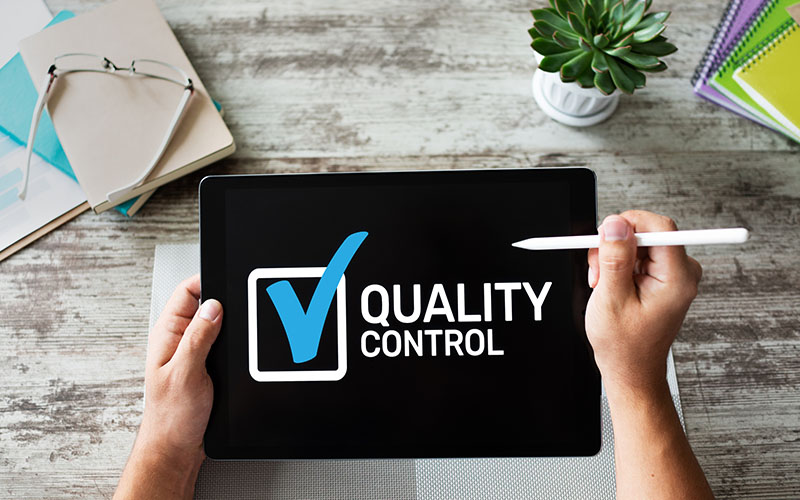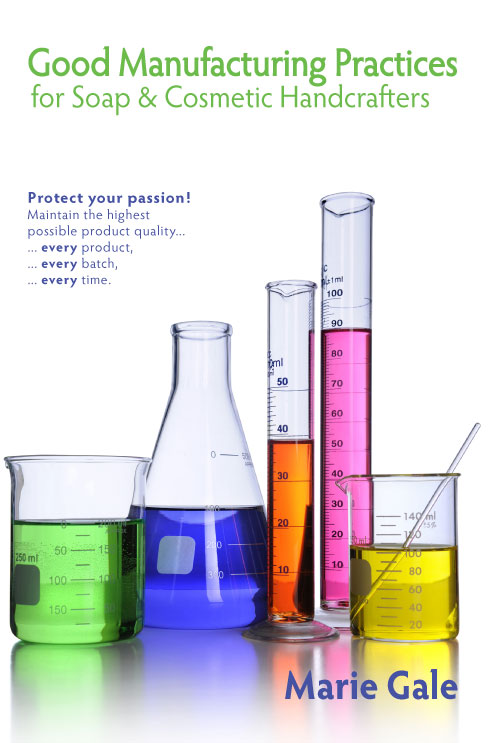“Quality control” is all about finding each little thing you can do to maintain control over the quality of your products. Let’s take a look at some of the things you can do to improve your quality control.
1. A Good Formulation
First and foremost, you need to have a good formulation that results in a high-quality product. Product formulation is about finding a balance and blend of ingredients that come together into a product that has just the right feel, color, scent, and effectiveness that you want.
Start with a formulation that results in a product you are proud of; that you want to make and sell. Don’t compromise.
2. High Quality Ingredients
A formulation for a perfect lotion will only end up as good as the ingredients that go into it. If you are using botanical ingredients, make sure they are clean, fresh, unadulterated, and within their effective date.
A rancid (or even just-starting-to-turn) oil or a slightly-off herbal infusion can change the color, scent, or feel (usually for the worse).
Fragrance or essential oils that have “turned” can affect the scent. It may not be awful, but it probably won’t be nearly as nice as it might be.
Emulsifiers, preservatives, and other functional ingredients can lose their effectiveness over time. Make sure they still work as they should!
3. Keep Your Workspace Clean
Clean counters and surfaces is the most obvious starting point. But it’s more than that. The floors should be clean (no dust bunnies). The AIR should be clean (no dust blowing around, no insects flying). You should be clean.
If the counters and surfaces you are working on aren’t clean, if there are dust bunnies getting stirred up or bugs in the air, then it’s very likely that some of that “unclean” is going to work its way into your product.
4. Keep Your Equipment Clean
Don’t compromise on the cleanliness of your equipment! Your bowls, spoons, mixers, blenders, measuring cups, scales, soap molds, filling equipment, buckets, swirl sticks, and anything else you use when you make your product should be CLEAN. Most items don’t need to be sanitized or sterilized, but they do need to be clean.
One of the easiest ways to lower the quality of a product is by contaminating it with the ingredients of a different product. A little fragrance or color bleed-over from one batch to the next can make a big difference.
5. Keep Your Workspace Organized
When your workspace is disorganized, it’s much harder to work and much easier to make mistakes. One mistake and your quality control drops. One big mistake and you can lose your entire batch.
Make sure that before you start that all of your (clean) equipment and (high-quality) ingredients are where they are supposed to be.
6. Know What You’re Doing
It sort of goes without saying that you should know what you’re doing. If you don’t know how to do a step in the formulation, don’t make that product—no matter how great it is. First find out how to do it, and THEN make the product.
If you have a helper, the same is true. Don’t give someone making your product a task that they don’t know how to do.
There should be no guesswork involved when it comes to how to make the product correctly.
6. Don’t Get Distracted
Getting distracted is another incredibly easy way to screw up your quality. You’re in the middle of adding ingredients and the phone rings. After talking with Aunt Maybell for 15 minutes you come back… and can’t remember where you were. So you add the shea butter twice or forget the fragrance. Not good.
When making your products, set up a time and place where you won’t get distracted and can work through to the end.
7. Keep Records
While you are making your product, keep records of what you did. Exact records. Detailed records. Note what ingredients you used, what temperatures things came to, if anything odd happened. Write down what the product looked and smelled like. (This is called a “batch record.”)
Later on, if that batch turns out to be the absolutely best batch ever, you can look back and see why. If it turns out to be the batch from hell, with customer complaints run amok, then you have a way to figure out what happened (and fix it).
8. Be Safe
Good safety practices won’t make your product any better, but bad safety practices have the possibility of ruining it completely. Cut your hand, with blood dripping into the lotion? Pretty poor final quality there.
Get lye in your eye and spend the next 4 hours on a trip to the emergency room? That batch of soap may set up right there in the mixing bowl.
Bottom line, be safe! Avoid emergencies when you are making your products.
9. Be Smart
Quality control is about CONTROL: keeping control of the quality. Most mistakes lead to lower product quality and are the result of losing control somewhere along the line. Think things through, be smart. Take some time and make sure you avoid making mistakes and losing control of the process and the quality,
10. Don’t Do Anything Stupid
There are probably a zillion stupid things you could do that could (or absolutely will) ruin your product quality. Don’t make your lotion in the kitchen when you are cooking bacon. Don’t feed your five cats on the counter where you’re mixing your soap. Don’t train your bird to hand you the mixing spoon. Don’t eat crackers while blending the lotion. Avoid measuring your ingredients outside in a dust storm. Don’t run with scissors.
Like those YouTube videos that start out with, “Hey, hold my beer and watch THIS!” it’s probably not a good idea to do that while you’re making your product.



Leave a Reply